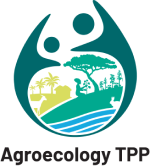Citizen science is a somewhat familiar term – but what does it entail in practice, and how can it be applied in the context of agroecological transitions?
The focus of a recent presentation entitled One Million Voices initiative: Introducing Citizen Science for Agroecology – held on 28 February – was to answer that exact question and to provide real-life examples of citizen science from around the world.
Citizen science is an important aspect of agroecology and the Transformative Partnership Platform on Agroecology’s (TPP) One Million Voices initiative in particular. Supported by the Swiss Agency for Development and Cooperation (SDC), the initiative was launched at the United Nations Food Systems Summit (UNFSS) side event in September of last year. Through a bold citizen science campaign that follows the principles of participation, inclusion, and overall social equity, the initiative aims to bring smallholder farmers, farm workers and food consumers together and have them lead the way to identify and develop solutions to support agroecological transitions, while generating knowledge and data on agroecology.
The event’s primary speaker, Maria (Rosy) Mondardini, Managing Director of the Citizen Science Center Zurich – which is a joint initiative by the University of Zurich and ETH Zurich – gave a stellar presentation on different approaches to citizen science and various types of relationships that exist between scientists and citizens.
She set out with a brief history of the term itself, which was only coined in 1979 despite the practice being around since 1900s – especially in the context of participatory bird inventorying. Besides public participation, one of the key features of citizen science is the production of new knowledge. As such, citizen science is not necessarily about science education and outreach (though it can be) – at its core is a participatory action for scientific advancement. Another fundamental characteristic of citizen science is voluntary contribution: money is rarely – if ever at all – the fulcrum of these collective projects and initiatives.
Citizen science initiatives typically involve both scientists and citizens. However, the relationships between the two can differ considerably and are either:
- Contributory and designed by scientists for which citizens primarily contribute data – this type of dynamic forms the vast majority of projects, which, essentially, implies more of a top-down approach;
- Collaborative and designed by scientists for which citizens help with project design, data analysis and dissemination of findings;
- Co-created and designed by scientists and citizens and for which citizens are actively involved in most, if not all, aspects of the research process. In citizen science, co-creation is the most desired approach through which scientists and citizens collaborate and co-design a question or a project from the very start.
Another relevant differentiation is made in citizen science about the actual contribution that citizens can make:
- Data collection, which involves the collection of primary or secondary data, such as images, answers, samples, descriptions, etc.
- Data analysis, which often involves web-based tasks that are unsuitable or difficult to perform by computers, such as image analysis, pattern recognition, text transcription, and mapping.
What about the benefits – what are the advantages of citizen science for both scientists and citizens? For scientists, advantages include:
- Resource efficiency of research activities, such as greater spatial resolution and denser observations, including data from remote and hard-to-reach locations;
- Opportunities to widen dissemination and impact of their work;
- New perspectives on topics, including new discoveries.
For citizens, benefits include:
- Personal satisfaction from contributing to science and to the wider public good;
- Personal development and opportunities to gain new knowledge and skills;
- Possibility to establish connections with similarly-minded people;
- Personal enjoyment from participating in enriching activities, including gamification.
Contrary to common belief, the quality of the data from citizens’ contributions – as demonstrated by numerous peer-reviewed studies – often equals that resulting from professional scientific methods, with similar levels of accuracy. It is thus a perfectly viable option for research, if properly planned and organized.
In the final part of the presentation, Maria also gave some tips and considerations for the TPP’s One Million Voices initiative, which follows a ‘value-driven’ approach in line with 13 CFS HLPE Agroecological Principles, the nine Principles for Digital Development, and the introduced citizen science principles. For instance:
- It is important to remember to ‘start small and build from there’;
- Clear communication is essential – avoid complicated language and focus on concepts that are easily understood by all;
- It is key to bear in mind that citizen science is a conversation that needs to start somewhere – from an interest, a need, or a research question related to a real issue;
Overall, the workshop alongside Maria’s useful insights will have an impact on further organization and structure of regional dialogues as part of the initiative and its evolution.
The recording of the One Million Voices initiative: Introducing Citizen Science for Agroecology presentation can be accessed below.
You can also read our previous blog on the launch event of the initiative.
Additional information:
Some examples of citizen science projects where citizens’ contribution revolves around data collection include iNaturalist, Bumble Bee Watch, The Globe Program and the Globe Observer app, Freshwater Watch, the Pieris Project and others.
The Citizen Science Center Zurich provides free resources and tools such as the web-based CS Project Builder and CS Logger for everyone interested in embarking on the citizen science journey.
To learn more about citizen science, here are some useful resources to consider:
Articles:
https://www.nature.com/articles/s41893-019-0390-3
https://link.springer.com/article/10.1007/s11625-020-00833-7
https://data.jrc.ec.europa.eu/dataset/jrc-citsci-10004
Platforms:
https://eu-citizen.science/projects

